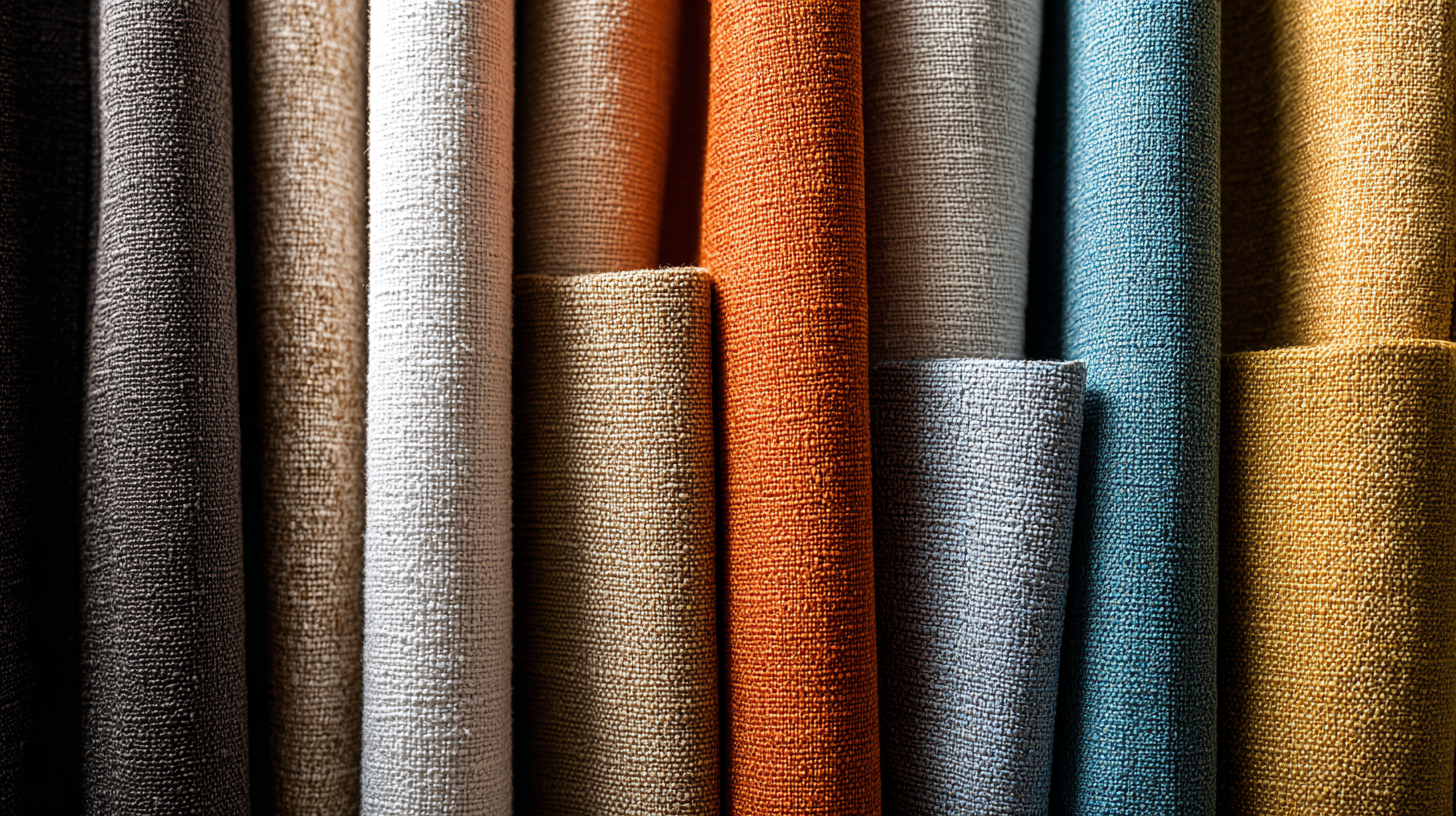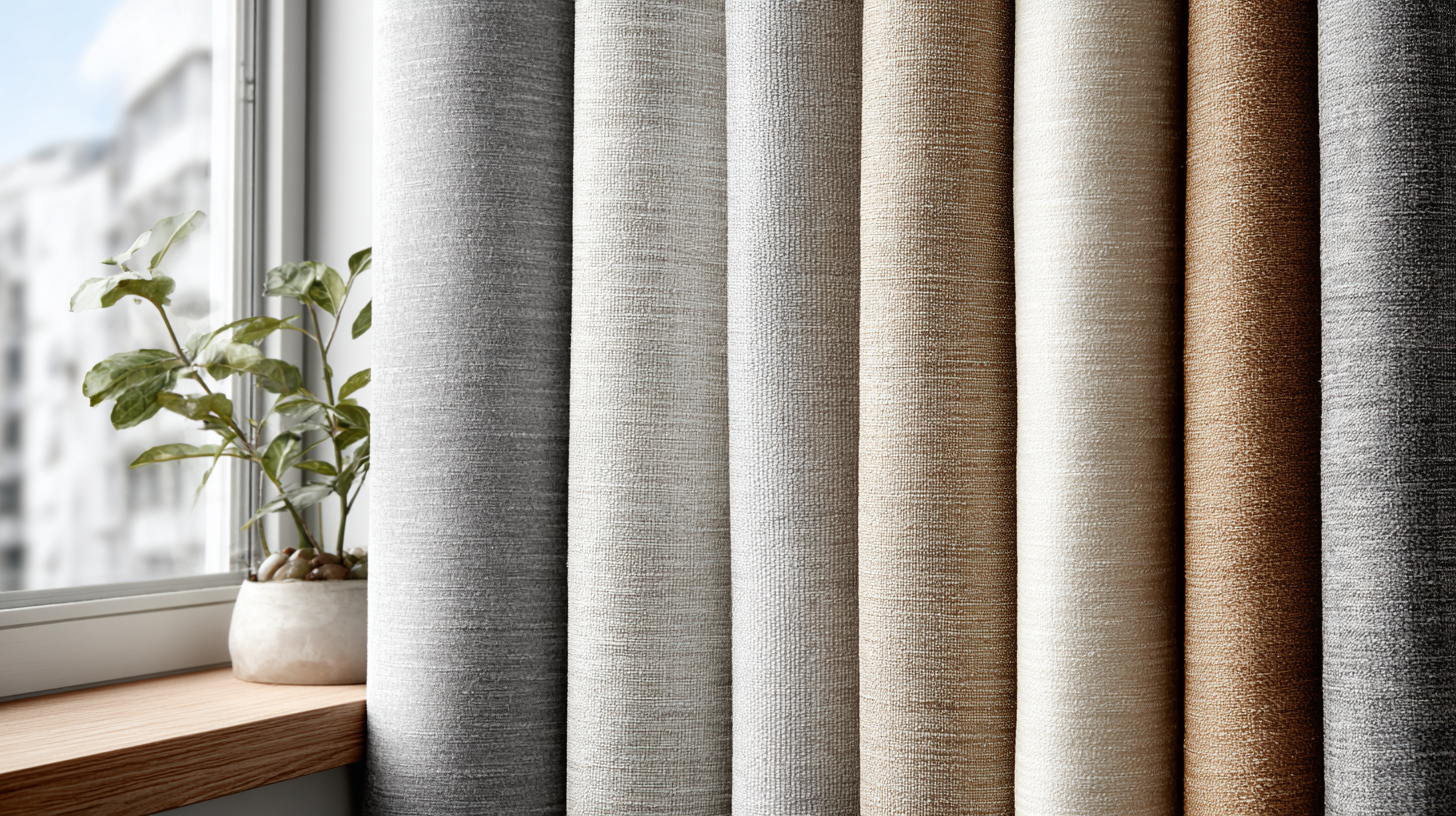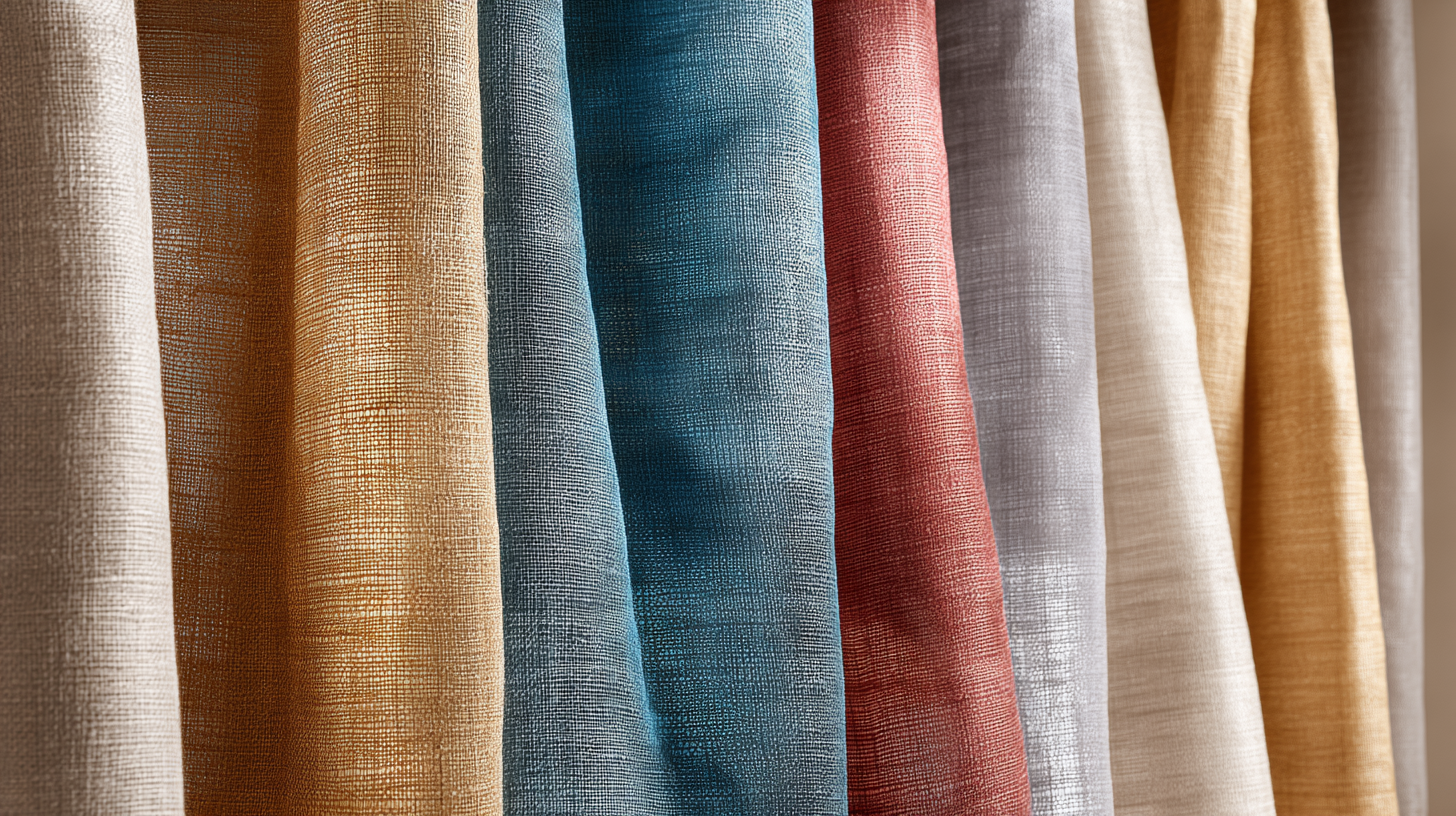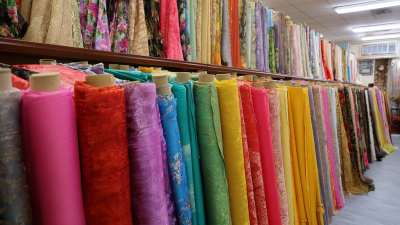Blog
Transform Your Space with Sustainable Window Drapery Fabric Choices
As the demand for sustainable home decor continues to rise, consumers are increasingly turning their attention to eco-friendly materials, particularly in the realm of window drapery fabric. Recent industry reports indicate that the sustainable textile market is projected to grow at a CAGR of over 9% through 2025, driven by a burgeoning awareness of environmental issues among consumers. This shift in consumer preference is not simply a trend; it reflects a broader commitment to sustainable living, where choices in window treatments can significantly impact both style and ecological footprint.

Incorporating sustainable window drapery fabric into interior design not only enhances the aesthetic appeal of a space but also contributes to energy efficiency and indoor air quality. For instance, fabrics made from organic cotton, hemp, or recycled materials can help reduce energy costs by providing better insulation, thereby aligning with global efforts to reduce carbon emissions. As reported by the Global Sustainability Report, window treatments account for up to 45% of a home's heat loss, demonstrating the crucial role that fabric choices play in creating a more energy-efficient environment. By exploring the top five sustainable options for window drapery fabric, homeowners can transform their spaces while making a positive impact on the planet.
Elevate Your Décor: The Aesthetic Appeal of Eco-Friendly Drapery
When considering how to enhance the aesthetics of your home, eco-friendly drapery options offer a unique blend of style and sustainability. The use of natural fibers like organic cotton, linen, and bamboo not only brings a soft, inviting texture to any space but also contributes positively to the environment. These materials are often dyed with low-impact processes, ensuring that your window treatments are not only beautiful but also safe for your home and the planet.
Incorporating sustainable window drapery into your décor can transform an ordinary room into an elegant retreat. The earthy tones and natural designs often found in eco-friendly fabrics provide a calming backdrop, allowing other decorative elements to shine. Moreover, these fabrics promote better indoor air quality, making your living space healthier without compromising on style. By choosing sustainable options, you are making a statement that aligns your personal taste with a commitment to environmental responsibility.

Materials Matter: Exploring Organic and Recycled Fabric Options
When it comes to creating an inviting and eco-friendly space, the choice of window drapery fabric plays a pivotal role. Focusing on organic and recycled materials not only enhances the aesthetic appeal of a room but also contributes positively to the environment. Organic fabrics, made from natural fibers like cotton, linen, or hemp, are cultivated without harmful pesticides or synthetic fertilizers, ensuring a healthier indoor atmosphere. Choosing organic drapery enables homeowners to minimize their carbon footprint while adding a touch of softness and natural beauty to their interiors.
Recycled fabric options offer another compelling solution for sustainable living. These materials are crafted from post-consumer waste, such as repurposed plastic bottles or discarded textiles, transforming them into stylish and functional drapery. Utilizing recycled fabrics helps reduce landfill waste and lowers the demand for new resources, promoting a circular economy. By incorporating these innovative materials into window treatments, individuals can make a chic and responsible choice that reflects their commitment to environmental stewardship while infusing their spaces with unique textures and colors.
Durability Meets Design: The Longevity of Sustainable Window Fabrics
Choosing sustainable window drapery fabrics not only contributes to environmental preservation but also ensures durability and exceptional design. Sustainable fabrics like organic cotton, hemp, and recycled polyester are renowned for their strength and ability to withstand the test of time. These materials are engineered to resist fading, wrinkling, and wear, making them a wise investment for any home decor project. Additionally, the aesthetic versatility of these fabrics allows for a variety of styles, from contemporary to traditional, enhancing the overall appeal of your space.

Tips for Selecting Sustainable Window Drapery Fabrics:
- Look for certifications such as GOTS (Global Organic Textile Standard) or OEKO-TEX, which guarantee environmentally friendly production processes.
- Consider the care instructions; some sustainable fabrics may require special care but can last longer with the right maintenance.
- Choose neutral or earthy tones to highlight the organic quality of these materials and ensure they blend seamlessly with diverse design themes.
By prioritizing durability alongside design, you can transform your living space into an eco-friendly haven that reflects your style while standing the test of time.
Care and Maintenance: Keeping Your Eco-Friendly Drapes Fresh
Caring for eco-friendly window drapery fabric is crucial to maintaining its appearance and longevity. Regular maintenance not only keeps your drapes looking fresh but also ensures that they continue to contribute positively to the environment. Start by dusting or vacuuming your drapes occasionally to remove dirt and debris. Use a soft brush attachment to avoid damaging the fabric. If your drapes are machine washable, follow the care instructions carefully, using a gentle detergent that is free from harsh chemicals to preserve their sustainable qualities.
In addition to routine care, be mindful of how you treat stains and spills. Acting quickly is key—blot the affected area with a clean cloth instead of rubbing it, as this can spread the stain and damage the fabric. For tougher stains, consider using natural cleaning solutions like vinegar and water, which can effectively lift dirt without harming the environment. By adopting these simple care techniques, you can keep your sustainable drapes looking pristine, ensuring they remain a stylish and eco-conscious choice for your living space.
Choosing the Right Style: Matching Sustainable Fabrics to Your Interior Design
When selecting sustainable window drapery fabrics, it's essential to harmonize them with your overall interior design. According to a recent report by the Sustainable Furnishings Council, the demand for eco-friendly materials has surged by over 30% in the past five years, highlighting a significant shift towards sustainability in design. Fabrics made from organic cotton, hemp, and linen not only minimize environmental impact but also lend themselves to a variety of styles, from chic modern to rustic farmhouse.
Choosing the right style involves considering both the aesthetics and functionality of the fabric. For instance, heavy linen drapes can create a dramatic effect in a contemporary space, while lighter cotton blends can enhance a minimalist design. A study published in the Journal of Interior Design emphasizes that well-chosen fabrics can elevate a room's atmosphere by up to 25%, making it vital to align your fabric choices with your desired ambiance. Look for textiles dyed with natural colors or treated with non-toxic finishes to ensure that your window treatments not only match your design vision but also contribute positively to the environment.
Transform Your Space with Sustainable Window Drapery Fabric Choices
| Fabric Type | Sustainability Rating | Color Options | Texture | Ideal Style |
|---|---|---|---|---|
| Organic Cotton | A+ | White, Beige, Light Blue | Soft and Smooth | Casual, Modern |
| Bamboo Fabric | A | Natural Green, Earthy Tones | Textured | Eclectic, Bohemian |
| Recycled Polyester | B+ | Diverse Colors | Sleek | Contemporary, Urban |
| Linen | A | Cream, Soft Blue, Olive | Wrinkled | Classic, Rustic |
| Hemp Fabric | A+ | Natural Beige, Gray | Rough | Industrial, Minimalist |

